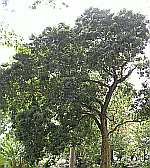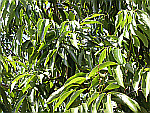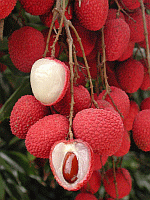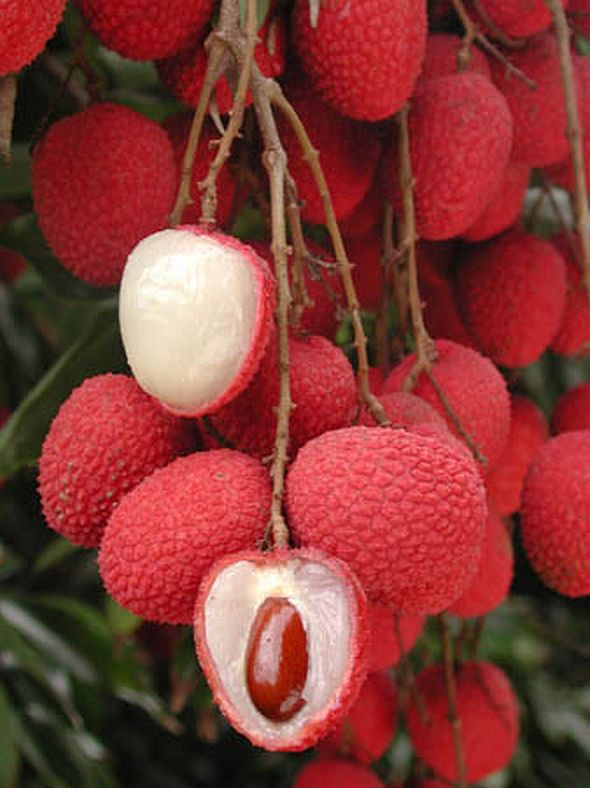
Roseau, Commonwealth of Dominica, West Indies

 |
The Dominica Botanic Gardens Roseau, Commonwealth of Dominica, West Indies |
 |
| Selected Trees and Shrubs: Litchi chinensis, Syn.: Nephelium litchi; Common name: Litchi, Lychi, Litchee |




|
 Pine Island Nursery, Florida Description: Medium to large, slow-growing tree, 10-20 m tall (30-60 ft), and almost equally broad, with dark gray stem; leaves glossy, alternate and pinnately compound, 4-8 leaflets; leaflets oblong to lanceolate, up to 20 cm long (8 in); flowers, born in terminal inflorescences up to 30 cm long (12 in), are greenish-white to yellowish, pollination by insects; fruit a drupe, born in loose, pendant clusters, 2-30 per bunch; are usually red, sometimes rose, pinkish or amber, round or heart-shaped, up to 4 cm wide (1.5 in), with rough, leathery skin; single large seed with edible, fleshy, white, juicy, sweet aril, of very pleasant flavor, highly desirable worldwide; single large specimen in Gardens, located at bottom of ramp to 35-Steps opposite Balsam tree; referenced in the Jones Guide of 1924 at that location; it has been there continuously, and so, though damaged by hurricane, must be at least 85 years old; this particular tree rarely flowers and is not known to fruit, apparently needing the stress of a cooler winter season; fruit photos are illustrative. Plant Family: Belongs to the Sapindaceae or Soapberry family, which includes the Ackee (Blighia sapida), Kenip (Melicoccus bijugatus), and Savonette or Soap Tree (Sapindus saponaria). Origin and Distribution: Native to South China, and grown in several areas of the subtropics, and in higher latitudes and elevations of the tropics; there are numerous varieties suited to different microclimates; in China and India, where most of the world production is located, the Litchi is grown between 15° and 30° N.; in the tropics it will fruit successfully at higher elevations with cooler winter months; in Jamaica, for example, good crops are obtained in the Mandeville area with its high elevation (2100 ft/645 m) and cool season (65-70 degrees F) Natural Habitat: Primarily subtropical and high latitude tropics; flourishes in regions where summers are hot and wet, and winters dry and cool, especially along rivers and near the seacoast; likes deep alluvial loam, but grows well on a wide range of soils; propagation usually by air-layering, with bearing in 2-5 years; trees continue bearing up to 100 years; seed-propagated plants do not reproduce faithfully, and take much longer to bear; and the choicest varieties have non-viable seed. Uses: Grown primarily for its delicious fruit, but sometimes as an ornamental yard-tree for its dark green, shiny leaves and beautiful bunches of red fruit; medicinal uses include eating the fruit in quantity to relieve chronic coughing and stomach ache, fruit-peel tea taken for smallpox and diarrhea, and powdered seeds used to relieve neuralgic pain. Indigenous Legends and Anecdotes: Cultivated in South China for thousands of years; many consider the Litchi one of the most delicious of fruits.
References: |
| Home Page | Trees & Shrubs | Site Coordinator | © Dominica Academy of Arts and Sciences, Dec. 2004 | Gardens' Curator |